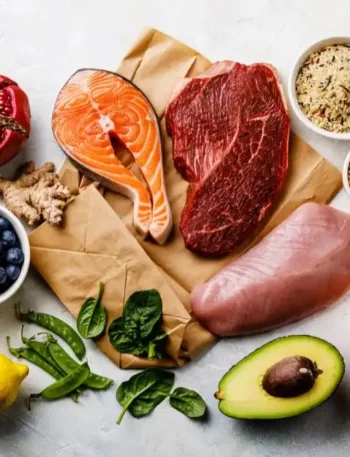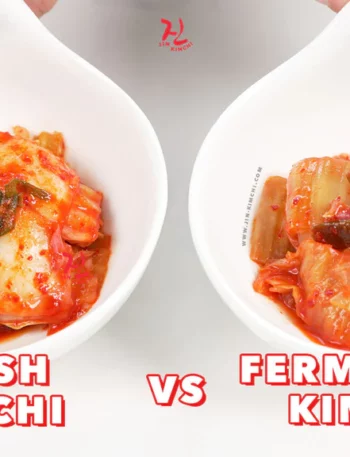Why do we willingly endure the fiery sensation of spicy food? For many, the heat of chili peppers is a source of both agony and ecstasy, making every bite an adventure.
At the heart of this love-hate relationship is capsaicin, the chemical compound that gives chili peppers their characteristic heat.
But capsaicin does more than just set your tongue ablaze—it activates complex pain and pleasure responses in the body, making spicy food a uniquely fascinating experience.

What Is Capsaicin?
Capsaicin is a naturally occurring compound found in chili peppers, responsible for their signature spiciness. It primarily resides in the pepper’s seeds and inner membranes. The intensity of spiciness varies depending on the type of pepper, from mild bell peppers to the fiery Carolina Reaper.
The Scoville Heat Scale measures the spiciness of peppers based on their capsaicin content. For instance:
- Bell peppers: 0 SHU (no heat).
- Jalapeños: 2,500–8,000 SHU.
- Carolina Reaper: Over 2 million SHU.
When you eat a spicy pepper, capsaicin binds to TRPV1 receptors—heat-sensitive nerve endings in your mouth and throat. These receptors are designed to detect actual heat and pain, which is why your brain interprets the capsaicin-induced sensation as “burning.”
The Science of Pain and Capsaicin
The pain from capsaicin is a trick of the senses. When capsaicin binds to TRPV1 receptors, it triggers a signal to the brain that mimics the sensation of extreme heat or burning.
Although no physical damage occurs, the brain reacts as if there’s a genuine threat, initiating symptoms like sweating, flushing, and even tearing up.
Interestingly, capsaicin doesn’t just stop at activating pain receptors. With repeated exposure, these receptors can become desensitized, which is why frequent spice enthusiasts build a tolerance over time.
This desensitization is also why capsaicin is used in topical creams to alleviate pain, as it overwhelms nerve endings and reduces their sensitivity.
Pleasure and Endorphins: Why We Love the Heat?
Despite the pain, many people find spicy food irresistible. This seemingly paradoxical reaction can be explained by the body’s response to the perceived “threat.”
- Endorphin Release:
- Capsaicin-induced pain prompts the body to release endorphins, natural chemicals that relieve pain and create feelings of pleasure or euphoria. This is why eating spicy food can lead to a “spice high.”
- Dopamine Boost:
- The challenge of enduring spicy food activates the brain’s reward system, releasing dopamine—a neurotransmitter associated with pleasure and satisfaction.
- Cultural and Personal Factors:
- Spicy food is deeply embedded in many cuisines worldwide, from fiery Indian curries to Mexican salsas. Exposure from a young age can increase tolerance and even create a preference for spicy flavors.
Health Benefits of Capsaicin
Beyond the sensory thrill, capsaicin offers several health benefits:
- Pain Relief:
- Topical capsaicin creams are used to manage chronic pain conditions like arthritis and neuropathy by desensitizing pain receptors.
- Boosting Metabolism:
- Capsaicin has been shown to temporarily increase metabolism by raising body temperature, potentially aiding in weight management.
- Anti-Inflammatory Properties:
- Capsaicin’s ability to reduce inflammation can benefit conditions like joint pain and even heart health.
- Antioxidant Effects:
- Chili peppers are rich in antioxidants, which help combat free radicals and reduce the risk of chronic diseases.
Why Some People Tolerate Spice Better Than Others?
Spice tolerance varies widely between individuals, influenced by several factors:
- Genetics:
- Variations in the TRPV1 receptor gene can make some people more sensitive to capsaicin, while others barely flinch at a ghost pepper.
- Desensitization:
- Regular exposure to spicy food reduces the sensitivity of TRPV1 receptors, allowing people to handle higher spice levels over time.
- Cultural Influence:
- People from regions with spice-heavy cuisines often develop a higher tolerance simply due to dietary habits.
Exploring the Culinary and Psychological Appeal of Spicy Food
Spicy food isn’t just about flavor—it’s an experience. From spicy food challenges to the sense of accomplishment after conquering a particularly hot dish, the psychological appeal is undeniable. Spicy flavors also enhance dishes by adding depth and complexity, making them a staple in many culinary traditions.
Moreover, spicy food often serves as a social bonding experience. Whether it’s sharing a bowl of spicy noodles or daring friends to try the hottest wings on the menu, the communal aspect adds to its appeal.
Cautions and Considerations
While capsaicin offers many benefits, it’s not without risks:
- Digestive Sensitivity:
- Excessive consumption of spicy food can irritate the stomach lining, leading to discomfort or heartburn.
- Spice Overload:
- Consuming extremely hot peppers can cause temporary numbness, sweating, and even nausea. Moderation is key.
- Neutralizing Heat:
- If you’ve bitten off more spice than you can handle, avoid water (it spreads capsaicin) and opt for dairy products like milk or yogurt. These contain casein, which helps neutralize capsaicin’s effects.
Capsaicin is much more than a compound that adds heat to your favorite dishes—it’s a fascinating player in the intersection of pain, pleasure, and health.
From stimulating endorphin release to offering genuine health benefits, the science of capsaicin sheds light on why we crave spicy food despite its fiery kick.
So, the next time you reach for a bowl of spicy curry or a plate of hot wings, savor not just the flavor but also the unique sensory journey it provides. After all, a little heat might be just what you need to spice up your life—literally and figuratively.









